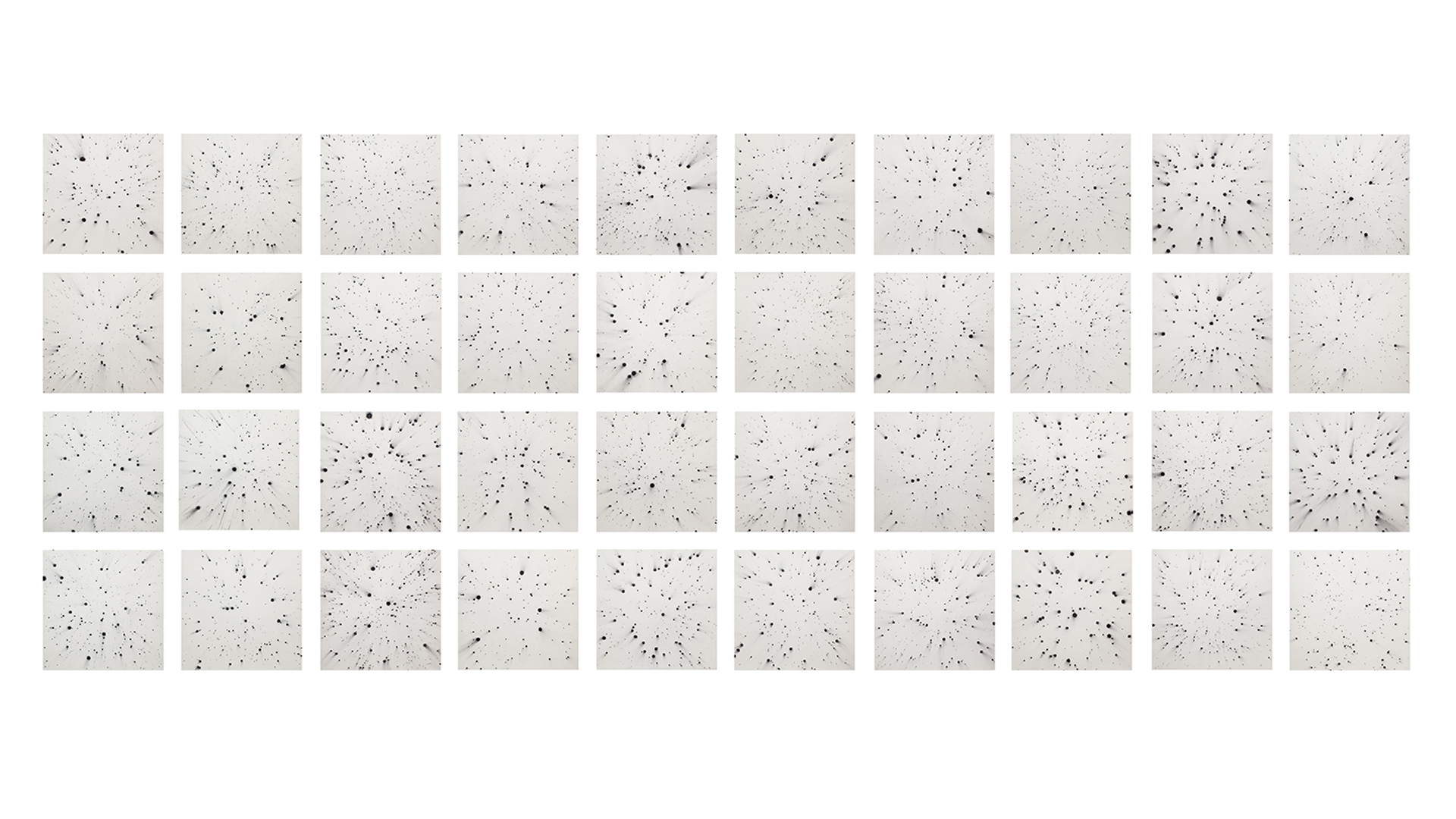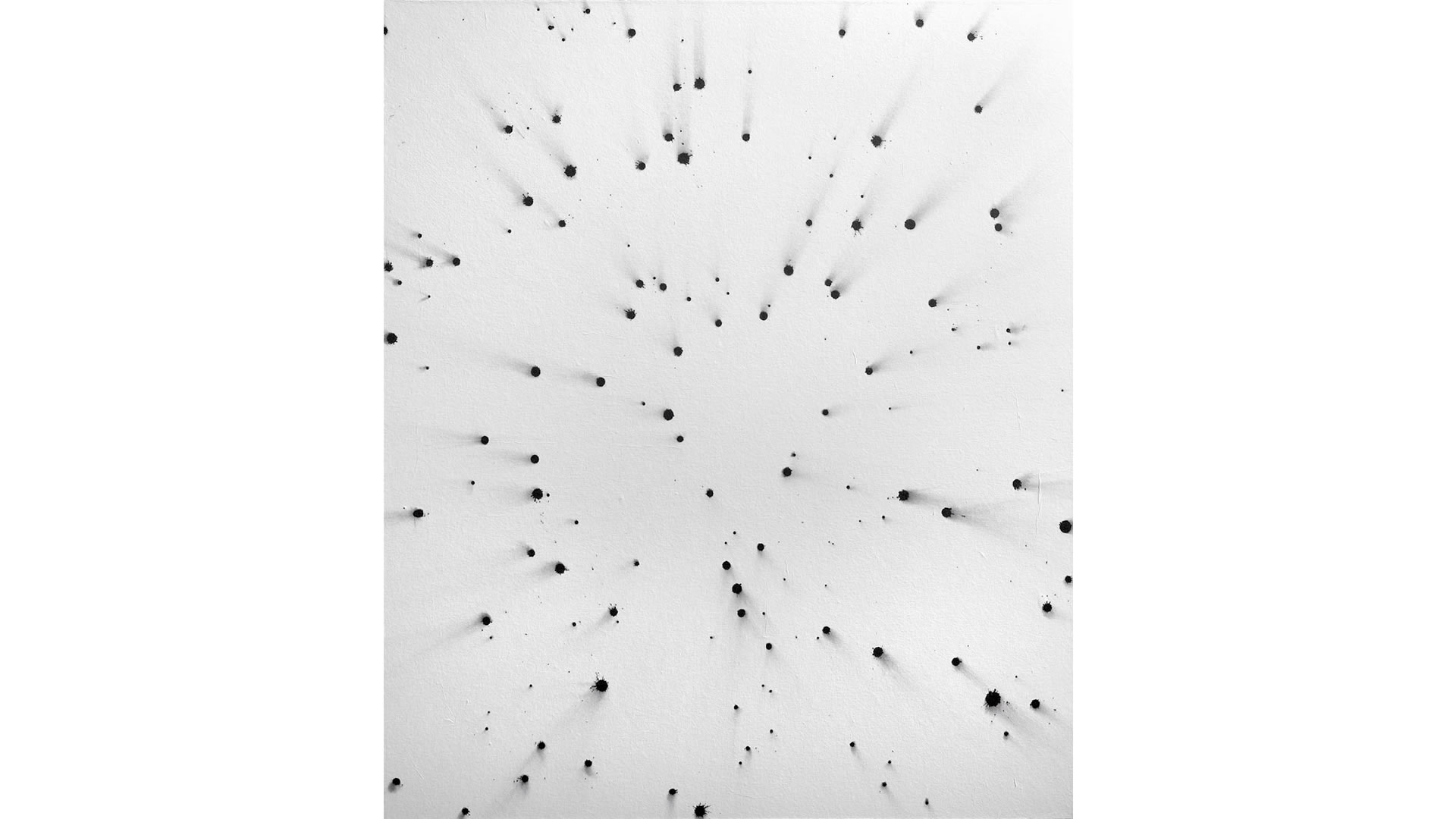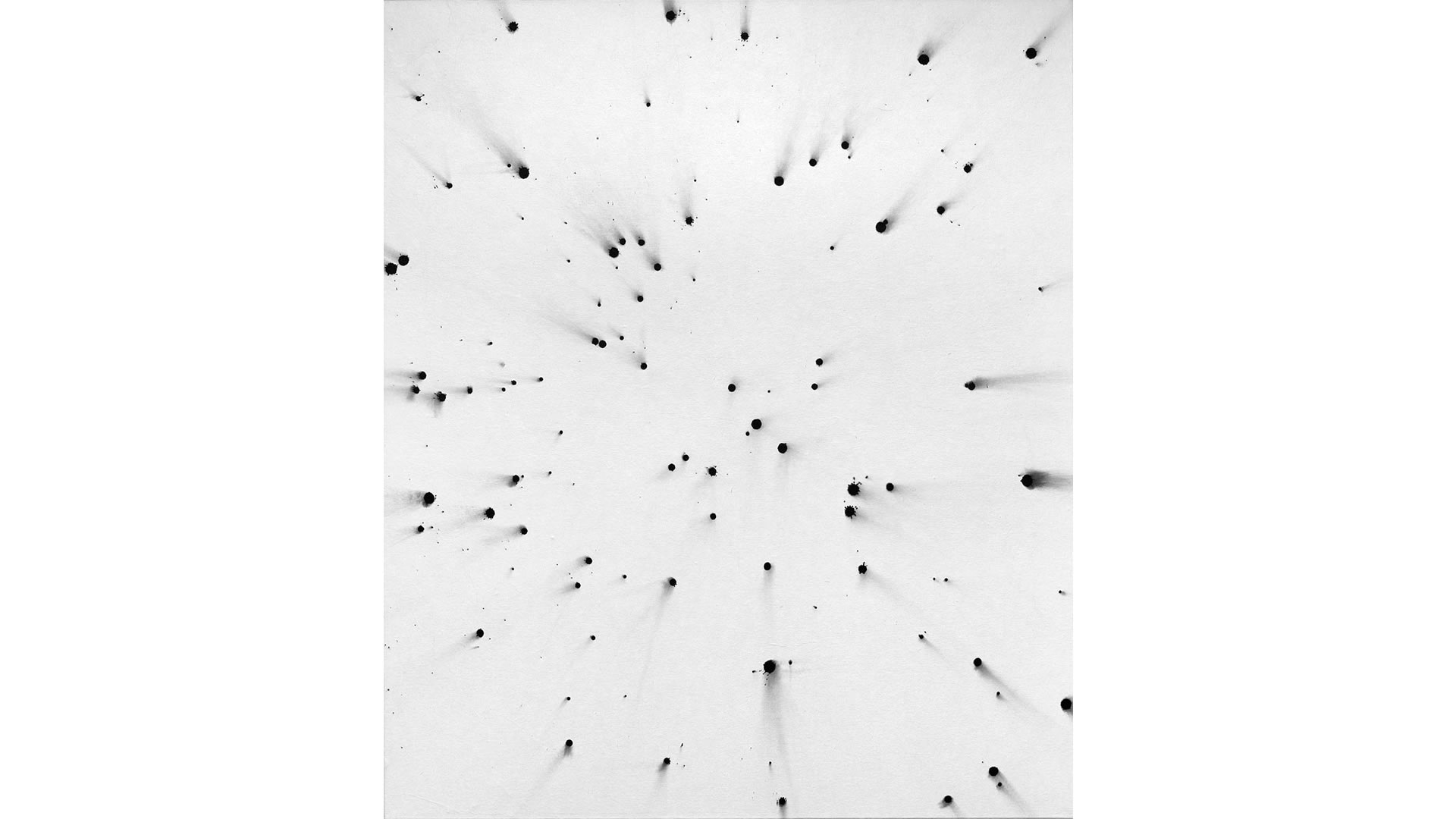Break up 2000-2017
In the meantime, by using China ink, the artist developed a technique of her own. She laid out 40 sheets of rice paper mounted on the same amount of wood panels in four rows of ten elements. Liberated henceforth from calligraphy, she produced spots and stains of ink onto these square surfaces according to a random rhythm.
The result was a work with a significant title - Break up -, with forty fragments of “constellations” impossible to reassemble into one single picture, for each element obeyed its own laws (of dispersal, of centrifugal movement, of dilution, etc.), and therefore rendered unique and impossible to copy or to reproduce.
This liberating dripping allows the artist to move away from calligraphy and the classical Chinese landscape, with representation in short. Even if this technique refers to the traditional landscape style called “spattered ink”; it contributes towards creating an analytical artwork, by underlining the minimal ingredients of China ink: the dot of ink (which is an even smaller unit than a brushstroke) and the paper which is equivalent to the background.



